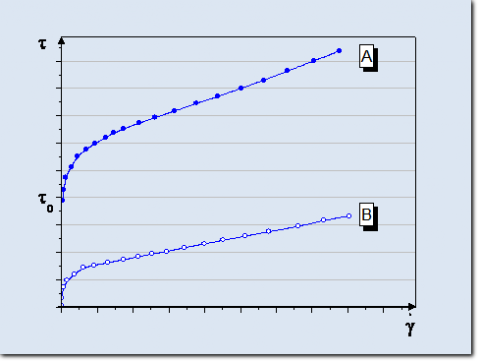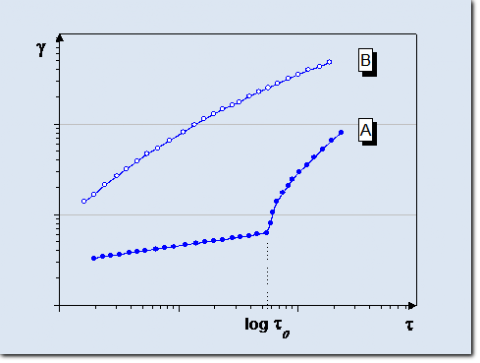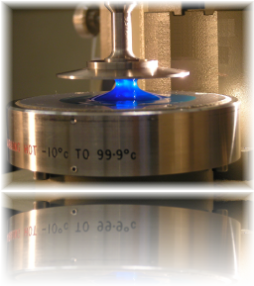Flow curve with yield point - Homepage WEE-Solve GmbH
Main menu:
- Home
- Menütrennlinie 7
- About us
- Menütrennlinie 1
- Fractionation
- Menütrennlinie 4
- Rheology
- Menütrennlinie 5
- Contract research
- Menütrennlinie 6
- Analysis
- Menütrennlinie 8
- Contact
Flow curve with yield point
Pasty and creamy samples, sealants, but also solids like steal exhibit a so called yield point. These samples don't flow until the applied shear stress exceeds a certain value, namely the yield stress.

Flow curve of samples with (A) or without (B) yield point.
The yield point is usually determined by extrapolating a flow curve to zero shear rate. Therefore the experimental data of the flow curve has to be fitted with a regression model, e.g. Bingham, Casson or Herschel-
Often it is better to determine the yield point by analyzing the experimental data at low shear stresses below
Below the yield strength the samples exhibit elastic deformation behaviour and often a creeping with high viscosities. For the analysis it is recommended to plot the logarithm of the deformation against the logarithm of the shear stress.

Determination of the yield point by means of analysis of the elastic deformation below the yield point.
In the ideal case of a linear-
Strictly speaking, a lot of samples that exhibit a yield point also flow below
